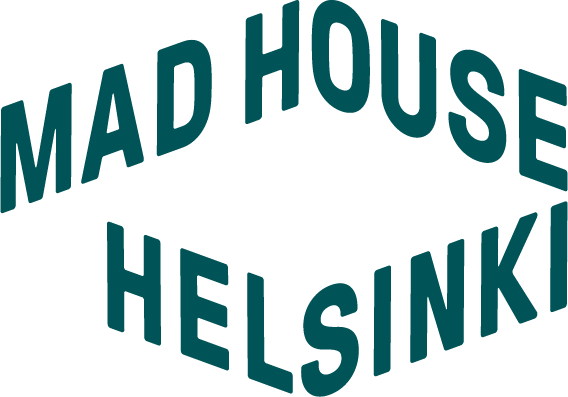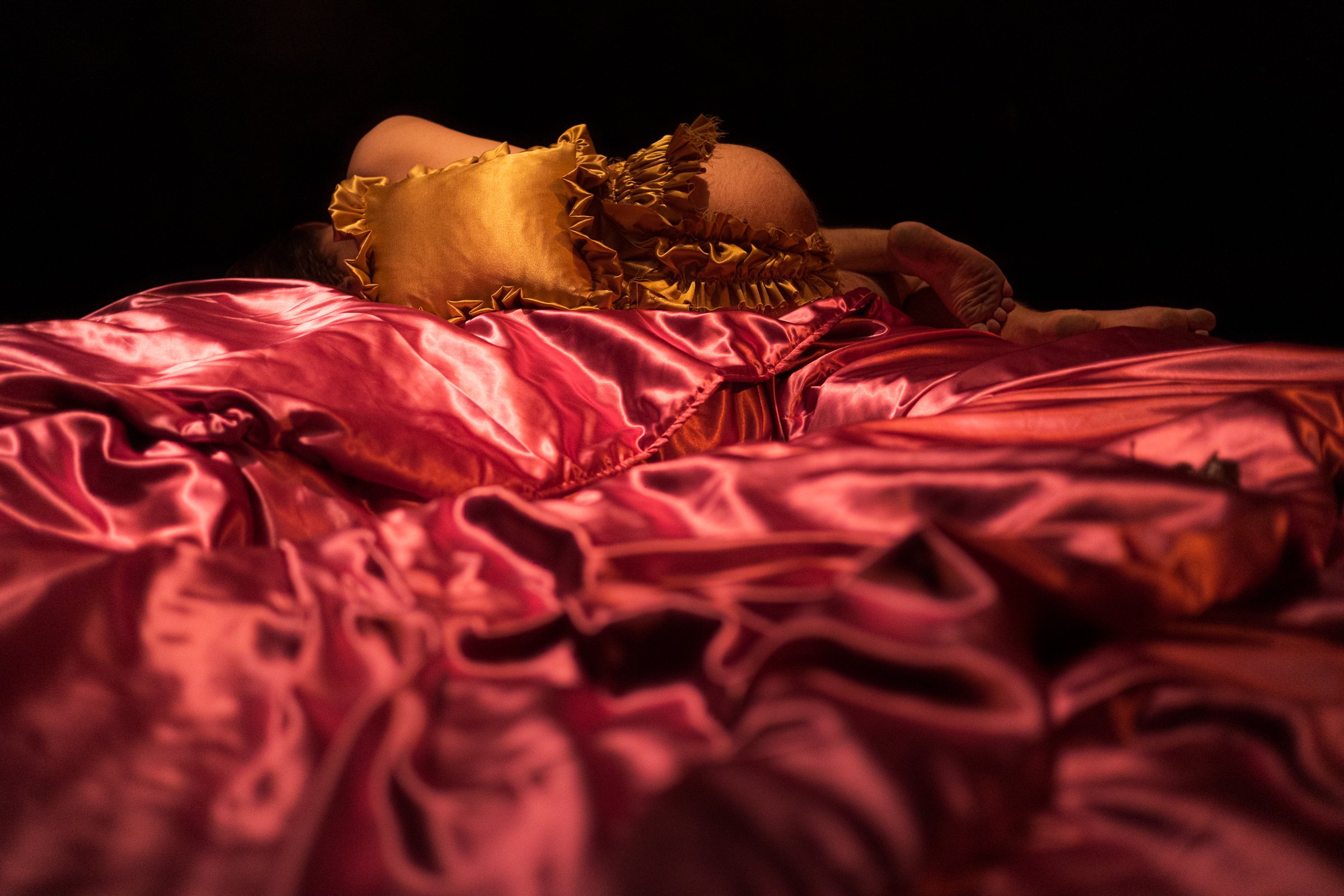Interview with Tarleena Laakko, Julia Jäntti & Virpi Nieminen
Mad House: EAT PREY LOVE is your third stage production together. How did you come together and what is the artistic attraction between you?
Tarleena Laakko, Julia Jäntti, Virpi Nieminen: We studied in the same year at Teak. In our first collaborative work "Don't worry, honey, this is a playroom" (2017), the three of us happened to be in a working group without any other designers. During the pre-design period of the piece, our way of working and communicating started to take shape. Thinking about the stage, talking about it and leaning on the work of others seemed to feed the kind of working we had all been longing for. We began to jokingly call our work a three-headed monster, even though our heads were going in different directions, decisions and solutions came about through working together.
We are still brought together by a shared interest in the centrality of aesthetics, materiality and audiovisuality of performances and the ambiguity of the stage.
In our work, we are interested in chance, intuition, fumbling, failure and surprise. We have a collage-like approach to our work and seek to foster the autonomy of each individual artistic process.
Photo by Jussi Ulkuniemi
MH: What kind of themes does EAT PREY LOVE deal with: how does a swampy marsh emerge on stage? How did the name come about?
Tarleena Laakko, Julia Jäntti, Virpi Nieminen: The work deals with the monstrosity that is inevitably part of life, the struggle to survive it and its unpredictability. Our work is characterised by a desire to make room for monstrosity and the monster without taking possession of it or defining it. In the work, the scum is both a dramaturgical and a theatrical element. The characteristics of the swamp, such as immersion, humidity, confusion, messiness, unpredictability, decaying and decomposing matter are also present in the way the work is constructed. In some cases, the dirt is created in an uncontrolled way.
The name was actually the first thing we started with and it was already born during our final project HUKASSA (2019). We were interested in the critique of happiness and self-help aesthetics, we watched the film Eat Pray Love because of the genre it represented. The film is pretty bad, but something about the phenomenon it created intrigued and disgusted me. At first we thought we would share the words Eat Prey and Love individually as the title of each show in the series, but together they are the most delicious.
MH: The work is the first part of the Monster Show series. What do you see as important in creating a continuum of performances and making them part of a larger whole?
Tarleena Laakko, Julia Jäntti, Virpi Nieminen: It is not only a series of presentations, but also about developing common practices and practices. Working together can be tricky and we try not to over-silo the trickiness or the fun of what is going on at any given time. When all things are being promoted as if at the same time there is no clear basis on which to build, it requires a great deal of patience and tolerance of uncertainty on everyone's part. Thinking and experimenting, especially together, are slow processes. It does not make sense for us to always start from scratch and put aside the material we have already found. We share the desire to recycle what we have already discovered for a new round, to build on discoveries and loves made in the past, and to resist the obsession or ideal of the 'new'. We want to give things time to develop and change shape, to let materials and work show us where something leads, to make sure there is room in the process to follow even vague hunches, to let things unfold in time in unpredictable directions.
The work and the performance can be different in a way that is not usually possible for a single performance. The long process allows the materials of the work to be revealed again, changed as the process progresses. A process that spans different seasons and several years allows working with different temporal layers than a process that is condensed into a few months. An artistic process that is condensed into a few months does not necessarily allow time to get to know and learn how to work with certain materials.

